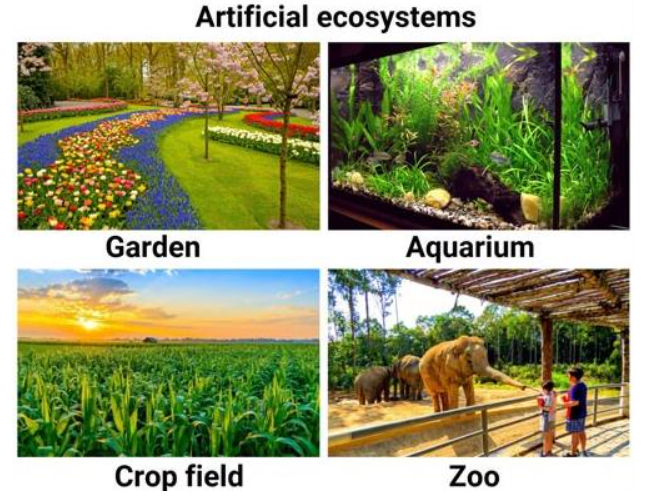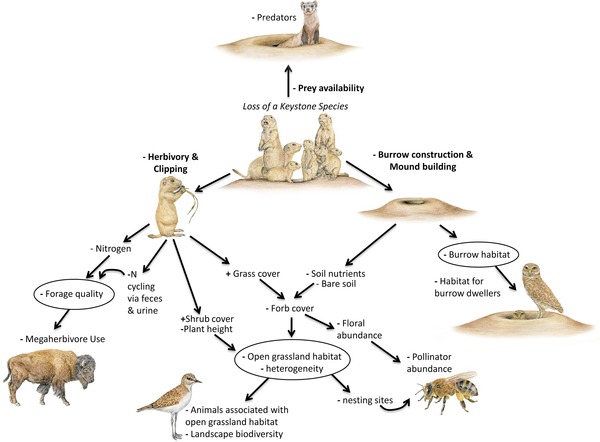Biodiversity Study Guide
Introduction:
Various creatures and their relative frequencies in an environment are referred to as biodiversity. It also represents how organisms are organized at various levels.
Biodiversity is important for both ecological and economic reasons. It supplies us with food, shelter, fuel, clothes, and various other necessities. It also reaps financial benefits from tourism. As a result, having a thorough understanding of biodiversity is critical for a long-term livelihood.
Types of biodiversity:
Biodiversity can be classified into three categories:
1. Species diversity:
The various types of species found in a given location are species diversity. It is, at its most fundamental level, of biodiversity. It encompasses all types of creatures, from plants to microbes.
2. Genetic diversity:
It refers to the differences in organisms’ genetic resources. Every member of a species has a genetic makeup distinct from that of others. That is why each person has a unique appearance. Similarly, numerous variations of the same species of rice, wheat, maize, barley, and other grains exist.
3. Ecological diversity:
An ecosystem is made up of both living and non-living creatures and their interactions. Ecological biodiversity refers to the diversity of plant and animal species that coexist and are linked by food webs and food chains.
It is the diversity observed among a region’s many ecosystems. Ecological diversity may be found in various environments, such as deserts, rainforests, and mangroves.
Natural ecosystem:
- A natural ecosystem is a group of living and non-living organisms in the wild. Each component interacts as a single unit through physical, chemical, and biological processes.
- Natural ecosystems are distinguished from other ecosystems because they are entirely natural. Human activity does not affect their relationships, as with artificial ecosystems.
- Soil, sunshine, air, water, plants, animals, and microbes are all components of natural ecosystems that cause these interactions.
- Each of these environmental elements is linked, either directly or indirectly. Temperature fluctuations, for example, have an impact on plant development.
Artificial ecosystem:
- Artificial ecosystems are ecosystems that humans have created for economic or other purposes. Humans have altered these ecosystems for their gain, and they might be terrestrial or aquatic.
- Example: Crop fields, aquariums
Relationship between ecosystem diversity and its resilience to changes in the environment:
- Biologically diverse communities are also more inclined to have species that impart ecosystem resilience. As a community grows, there is a greater possibility that any species will have features that enable it to adapt to changing conditions. Such species might protect the ecosystem against the extinction of other species.
- As the number of interactions (complexity) between the diverse species rose, so did the ecosystem’s stability.
- Species diversity increases the resilience of an ecosystem by allowing different species to fulfill the same job, allowing the ecosystem to recover more rapidly after a disruption.
Components of the ecosystem:
Biotic components:
Living creatures that directly or indirectly impact other species in an ecosystem are referred to as biotic components. Plants, animals, and microbes, as well as their waste products, are examples.
The three major groups of biotic components are producers, consumers, and decomposers.
- Producers are plants that can meet their own energy needs through photosynthesis in sunshine and chlorophyll in the environment. All other living species rely on plants to meet their energy needs for nourishment.
- Herbivores, carnivores, and omnivores are among the consumers.
- Fungi and bacteria, which are saprophytes, are decomposers. They eat organic stuff that is decomposing and convert it to nitrogen and carbon dioxide. Saprophytes are important in recycling nutrients so that producers, such as plants, can utilize them again.
Abiotic components:
All chemical and physical elements, or non-living components, make up the abiotic components of an ecosystem. Abiotic components can differ from one ecosystem to the next and from one place to another. They mostly serve as life supporters. They control and limit the number, variety, and development of biotic components in an ecosystem. As a result, they are referred to as limiting factors.
Abiotic factors in a terrestrial ecosystem include climate, soil or rock type, altitude, temperature, nutrients, and minerals. In contrast, dissolved gases, depth of water, salinity, pH of water, light intensity, and other abiotic factors in an aquatic ecosystem include dissolved gases, depth of water, salinity, pH of water, and light intensity.
Keystone species:
- A keystone species is an organism that contributes to the overall definition of an ecosystem. The ecosystem would be drastically altered or non-existent without its keystone species.
- Functional redundancy is minimal in keystone species. This indicates that if the species became extinct, no other species would replace its ecological niche. The environment would be pushed to alter dramatically, allowing new and potentially invasive species to colonize the area.
- A keystone species can be any organism, from plants to fungus, and they are not usually the largest or most numerous species in an ecosystem.
- Almost all instances of keystone species, on the other hand, are creatures that have a significant impact on food webs. The way these creatures affect food webs differs depending on the environment.
Conclusion:
- The quantity of various creatures and their relative frequencies in an environment is biodiversity. It also represents how organisms are organized at various levels.
- A natural ecosystem is a group of living and non-living organisms in the wild.
- Artificial ecosystems are ecosystems that humans have created for economic or other purposes.
FAQs:
1. What are the 3 types of biodiversity?
Genetic, species and ecological diversity are usually considered at three levels of biodiversity.
2. What is biodiversity, and why is it important?
Biodiversity supports functional ecosystems that offer oxygen, clean air and water, plant pollination, insect control, wastewater treatment, and various other ecosystem services. Many leisure activities, including sightseeing, hiking, camping, and fishing, rely on our unique biodiversity.
The quantity of various creatures and their relative frequencies in an environment is biodiversity. It also represents how organisms are organized at various levels. Biodiversity is important for both ecological and economic reasons.
3. Who defined biodiversity?
The term “biodiversity” is a contraction of “biological diversity,” It was created in 1985 by Walter Rosen of the National Research Council as a title word for a seminar on biological diversity that he was arranging.
4. What is biodiversity?
Biodiversity is defined as the total number of plants and animals present in a given location. It is essentially a measurement of all genetic, species, and ecological variables. It is mostly impacted by the region’s environment, geography, climate, and topography.
We hope you enjoyed studying this lesson and learned something cool about Biodiversity! Join our Discord community to get any questions you may have answered and to engage with other students just like you! Don’t forget to download our App to experience our fun, VR classrooms – we promise, it makes studying much more fun! 😎
Sources:
- Biodiversity. https://www.nationalgeographic.org/encyclopedia/biodiversity/. Accessed 27 Dec, 2021.
- What Is Biodiversity?. https://www.amnh.org/research/center-for-biodiversity-conservation/what-is-biodiversity. Accessed 27 Dec, 2021.
- Biodiversity. https://plato.stanford.edu/entries/biodiversity/. Accessed 27 Dec, 2021.
- Wilderness. https://winapps.umt.edu/winapps/media2/wilderness/toolboxes/documents/50th/Wilderness_Biology.pdf. Accessed 27 Dec, 2021.
- What is biodiversity?. https://www.worldwildlife.org/pages/what-is-biodiversity. Accessed 27 Dec, 2021.



